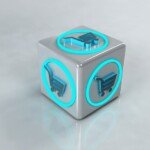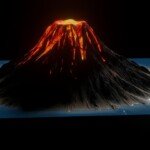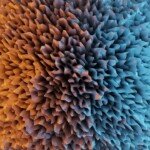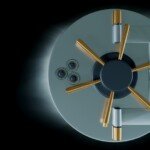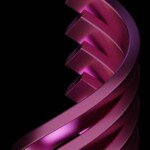Convert metals accurately: The fundamentals of CNC Press Brakes
In the field of modern sheet metal manufacturing, achieving accurate, repeatable and complex bending is not commercially acceptable. This is where CNC Press Brake Reigns Supreme is. These computer-controlled machines are more advanced than simple manual brakes and are the hosts behind countless products, from complex electronic packaging to robust structural components. Understanding their operation is key to appreciating the precision metal formation capabilities available today.
Core principle: Bending force with intelligent control
On its heart, the pressure brake bends the metal or plate with a punch. The paper is located on the mold (usually V-shaped, usually) and is lowered with a huge force, bending the material to the desired angle. this "CNC" (Computer numerical control) aspects elevate this basic principle to an art form. Instead of relying on the operator skills and manual adjustments of each bending, CNC Press Brake uses complex computer systems to control:
- RAM positioning: Indicates the exact distance of the punch drop (y-axis), determines the bending angle.
- Post-gauges movement: Accurately position the material (X-axis) before each bend. Advanced models feature 3D Backgauges (R-axis) height control.
- Bending sequencing: Complex sequences of bent without manual intervention.
- Coronation compensation: Automatically adjust the bed or ram to offset deflection at extreme tonnage to ensure bending consistency throughout the length.
- Operation parameters: Controls RAM speed, pressure (tonnage) and residence time.
Under the hood: Key components
CNC Press Brake combines powerful mechanics with sophisticated electronics:
- frame: A huge, rigid structure that absorbs bending force.
- RAM (beam): The upper moving part of the punch.
- bed: The fixed lower part holds the mold.
- Hydraulic system/electric drive: The large amount of tonnage required to generate bending. Modern electric/servo electrical systems provide higher speed and energy efficiency.
- CNC controller: this "brain" – Usually a touch screen interface, operator program bending sequences (manually or via CAD/CAM import) and controls computer functions.
- Post-gauges: A fully automatic system with fingers positioning the metal plates precisely on the programmable docking station.
- Fist and Death: Tools made of hardened tool steel. Different shapes (v-dies, gooseneck punching, acute angle tools, head-off molds) produce a diverse curved geometry. The opening (V-width) and the punch radius are key factors in achieving the desired bending.
Common Types
Although subject to similar controls, the force transmission of pressure brakes is different:
- Hydraulic News Brakes: Use hydraulic cylinder to move RAM. Due to high power capability and smooth operation, dominance.
- Electrical/Servo motor brake: Use servo motors and ball screws/frames to achieve accurate high-speed RAM movement, which has significantly reduced energy consumption and noise.
- Hybrid system: Combine certain elements of both to obtain a specific performance advantage.
Why CNC media brakes dominate
CNC Press Brakes offers transformative advantages over manual machines:
- Unrivaled accuracy and repeatability: Micron-scale control ensures that each bending of each section is the same and that the batch after batch is the same. Eliminate errors in human measurement and positioning.
- Complex bending sequence: Ability to perform complex multi-bending components consistently.
- Improve productivity: Rapidly faster setup times (especially automation tool hand-changing), higher productivity and reduced manual labor requirements.
- Operator Safety: Reduced physical interactions during bending cycles enhance safety.
- Reduce waste: Consistent accuracy minimizes wrong material waste.
- Coronation Control: Automatic deflection compensation ensures a consistent angle throughout the bending length, which is critical for long parts or tight tolerances.
- Integrated data management: CAD/CAM integration allows seamless transmission of part design to the machine controller.
Where can you find CNC News Brakes: The World of Apps
Almost every industry relies on CNC bending:
- electronic: Chassis, housing, radiator.
- Automotive/Aerospace: Brackets, frames, structural components, internal panels.
- HVAC: Pipes, ventilation holes, housings.
- put up: Building panels, support brackets.
- Industrial Machinery: Cover, guard, frame.
- And countless others: Furniture, medical equipment, signage, lighting, etc.
Select Right Press Brake: Key Precautions
The choice is not just tonnage. Key factors include:
- tonnage: The ability to bend a specific thickness and material length (determined by material type and V-DIE width).
- Bed length: Determine the maximum size the machine can handle.
- Bending accuracy requirements: The tolerance level determines the required machine level (e.g. +/-0.1º vs +/-0.01º).
- Axis configuration: The complexity of the part indicates the required rear gauge shaft (X, R, Z) and may have CNC control of the front support or automation interface.
- Control system: Easy to program/operate, CAD/CAM compatibility, diagnostics.
- tool: The availability and cost of punches and deaths required.
- Power and floor space: Hydraulic and power consumption requirements and physical footprints.
- need: Production volume and partial complexity.
Master the operation: Best practices
Optimizing CNC brakes involves:
- Accurate programming: Make sure the CAD data is correct and explains the substance rebound.
- Precise tool settings: Proper installation and punching and mold alignment are crucial.
- calibration: Regular calibration of the post-meter, coronation system and RAM positioning are essential.
- Tool maintenance: Check regularly for punching and die for wear, damage or accumulation. Sharp edges are crucial.
- Operator training: A skilled operator is essential for effective programming, setup, troubleshooting and safety.
- General maintenance: Follow the manufacturer’s schedule for hydraulic fluid, lubrication, filter and system inspections.
The future is smart and integrated
CNC media braking technology is constantly evolving:
- Enhanced automation: The complete lighting factory integrates robots for automatic onboarding, unloading, bending and part stacking.
- Advanced sensors: Monitor bending angles, tool wear, material thickness and forces for adaptive process control and predictive maintenance in real time.
- AI and machine learning: Optimize bending sequences to predict rebound with higher accuracy and enhance quality control.
- Cloud Connection: Remote monitoring, diagnostics, data analysis and firmware updates.
- Simpler interface: More intuitive programming for increasingly complex tasks.
in conclusion
CNC pressure braking is the cornerstone of precision sheet metal manufacturing. Its ability to consistently produce complex, highly accurate bending capabilities with significant efficiency revolutionized manufacturing. From basic stands to complex aerospace components, these machines provide a geometric basis for countless products. Understanding their operations, capabilities, and needs enables businesses to make informed decisions about manufacturing needs.
Working with processing experts is crucial for projects that require unparalleled accuracy, complex geometry or high volume consistency. Greglight Lovers’ state-of-the-art five-axis CNC machining features include highly accurate news braking technology. Our deep expertise in advanced equipment and metal formation ensures that your sheet metal components meet the strictest tolerances and quality standards. Combined with our extensive secondary processing services – machining, welding, finishing – we provide a truly one-stop solution for complex metal manufacturing needs. Most of the materials are in our cab and can be processed quickly and customized. Trust Greatlight CNC machining to deliver extraordinary value when your project requires optimal precision and comprehensive manufacturing support. Quote your custom precision parts now!
FAQ: CNC Press Brake Demysitive
Q: What is the difference between a conventional pressure brake and a CNC pressure brake?
A: Regular pressure brakes rely heavily on manual adjustments to the RAM depth (angle) and rear meter (for positioning), requiring a lot of operator skills and time. CNC Press Brake uses computer controls to accurately and automatically locate RAM and BACK instruments based on pre-programmed sequences, ensuring repeatability and enabling complex bending with minimal set time between jobs.
Q: How "Bending deduction" Why is work important?
A: Bending subtraction (BD) is a calculated value that represents the amount of material consumed by stretching and compression during bending. It is used to determine the length of the starting flat pattern. Accurate BD is essential to achieve the final part size of your design. Material type, thickness, bending angle, internal bending radius and tooling will all affect BD. Modern CNC controllers usually calculate or find BD values based on K-factor calculations.
Q: What is it "Bounce back," How to compensate?
A: Due to its elastic properties, the metal tends to partially restore its original shape after bending. When the pressure brake releases pressure, the bending angle increases slightly. To compensate, the operator bends the metal slightly (smaller than the required angle) so that it bounces back to the exact target angle. The CNC controller stores rebound compensation values for different materials and thicknesses and automatically applies them during bending.
Q: Why are there so many different media brake tools (Punches & Dies) shapes?
A: Different shapes solve different bending challenges and create unique features:
- Gooseneck fist: Allows the bending flange to approach other bends.
- Acute horn punch: Make the bend exceed 90 degrees.
- Forecasting mold/high heel tool: Form z-bend or offset.
- Tools appear: Create a collapse "Hem" Along the edges for strength and safety.
- Multi-V mold: Different V widths are combined in one mold section for versatility.
- Radius death: Create large bends with constant radius instead of sharp corners.
Q: Do I need to strengthen or replace the brake tool when pressing it?
A: Tool maintenance depends largely on the strength of use and easy-to-use materials (abrasive metals penetrate the tool faster). Sharp edges are essential for cleaning bending and preventing material marking. Check the tool regularly for notches, bluntness, or over-rounding. Large use may require reuse every few months. Many stores use tools for professional wait-in. Severe damage or wear cannot be repaired.
Q: Can CNC press brakes handle materials other than steel?
Answer: Absolutely! The versatility of CNC pressure brakes is incredible and can form a variety of plate/plate materials including aluminum, stainless steel, copper, brass, and even titanium or wear-resistant steel (AR plates), provided the machine has sufficient tonnage for the specific strength and thickness of the material. Choosing tool materials (such as carbides) and surface finishes minimizes the marking of soft metals such as aluminum.
Q: When should manufacturers consider hydraulically performing servo motor brakes?
A: Servo electric brakes provide important advantages for priority projects:
- Energy saving: Power consumption is 50-80%.
- speed: Faster RAM cycles, especially partial stroke bending.
- Precision and control: Excellent position accuracy.
- Quiet operation: The noise level is significantly reduced.
- clean: No hydraulic oil leaks or spills. While initial investment may be higher, savings and performance often justify this, especially for mass production or environmentally friendly stores. Heavy bending of very thick plates can still be seen with a strong representation of the high tonnage hydraulic system.


